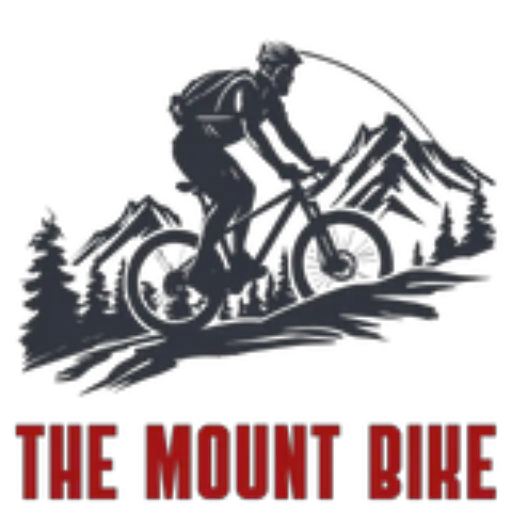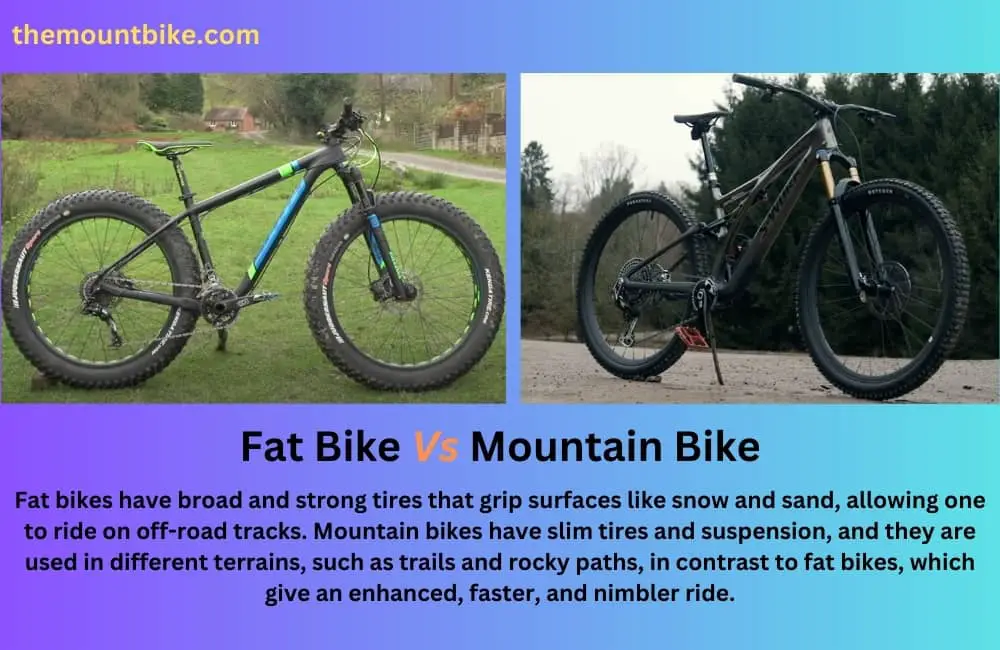To all the bike lovers out there, I know everyone has different perspectives on bike choices. Some like all-terrain bikes, some are passionate about off-riding, and for some, bikes should be the regular daily driver.
On top of that, among every two-wheel lover, a common debate arises when it comes to fat bikes vs. mountain bikes. Why?
It’s because they’re two of the most popular bikes since the get-go. Fat bikes are for those who prefer snowy or deserted terrain, and MTBs are for those who want to experience lightweight and regular rides.
But there’s a lot more than meets the eye. Hence, I decided to clear up all the fuzziness on which one to choose, how to choose, which one is better, the differences, and many more. That’s why stick to the end!
What is a Fat Bike?
Fat bikes are the type of bikes that have wider tires than your regular average bicycles. The tire of these two-wheelers is mostly around 3.5-5″ wide. Sometimes these bikes are called fat-tire bikes too, for their unique tire width.
The fantastic traction of these is great for snowy or muddy terrains too. Beginners can start off with this one, and I’m sure it’ll be safer!
Not to mention, the characteristics are unique here, such as,
- Manual gear ratio system. It means the speed will highly depend on you.
- Fat tire bike is normally heavier than a regular road bike
- Has a rigid frame without any suspension (mostly).
- The tires act as a suspension system.
What are They Used for?
Now you may wonder what a fat bike is actually used for. Fat bikes have more traction and grip than your regular bikes, so it’s easy for you to ride them off-road.
Plus, they’re suitable for:
- Mud
- Snow
- Bogs
- Sandy Trails
- Beaches
- Mountain Bike trails (some)
Not only these but also you can ride your fat tire bike on any on-roads or paved surfaces. You can use them on these terrains for your daily work if you live in these environments.
Advantages of Fat Bikes
As you might feel overwhelmed already, let’s introduce you to some benefits of fat bikes now.
Easy to Ride in Sand, Snow, and Mud
Fat bikes are fantastic if you live in a deserted place, or if your country is mostly snowy. These bikes have wide tires, which you already know, to distribute all the bike’s weight, thus feeling lightweight and easy to drive.
The tires will literally put less pressure on any ground, and you can easily run the fat tire bike on the sand, snow, or mud. Besides, great traction will be guaranteed.
Comfortable and Smooth Ride
Who doesn’t prefer comfort while riding, right? Fat bikes are exactly for that purpose. You’ll get the smoothest ride ever, no matter how deep the sand is or how slippery the road is.
The reason behind this smooth performance is that those high-volume fat bike tires usually run at low air pressure. As a result, the tires become so soft that they can absorb all the vibrations and shocks from the trail.
With that, you won’t see the bike slowing down, and you’ll enjoy an excellent ride. Indeed!
Can be Used for 365 Days
A great thing about a fat bike is that it’s super friendly in any weather or terrain, especially the snowy climate. You can use fat bikes every day, just like me!
Besides, they’re super available in Middle-Eastern countries for their outstanding grip on the sand dunes. You can ride them there too.
Multi-Functional
Sit back to experience a piece of shocking news about fat bikes now. Yes, it’s about their multifunctionality. You can literally change your fat bike to any MTB by only purchasing an extra wheelset.
With all these, there are more advantages like:
- Fat bikes are superior in shock-absorbing power.
- As it takes more energy to ride, it can work as a good exercise for you with those massive tires.
- Best for any off-trail riding.
- Your fat bike will provide you with a floating feeling with its low-air-pressure tires.
- Perfect for beginners and gives you the utmost confidence boost from the first day of riding.
- They are great for backpacking, snow biking, bicycle touring, and expedition rides.
- Fat bikes are fun, cool, unique, and safe.
Disadvantages of Fat Bikes
Fat bikes come with their fair share of cons. They include:
- Fat bikes apply non-standard-sized rims, tires, hubs, cranks, and bottom brackets. So, if in an emergency you need to replace one, it can be challenging.
- There’ll be lots of friction for the big tires, eventually slowing down the ride. It’ll cause power loss too.
- They’re heavier than the regular ones.
- The frame and tire choices are limited.
- It can cause hip or knee pain if you ride for a long time.
- The transportation of your fat bike can be hard.
- Fewer gear options are available.
What is a Mountain Bike?
Mountain bikes are vehicles that can be used as regular bikes for your daily work (in hill areas mostly). You can ride them off-road or on bumpy mountain rough terrain as they’re super lightweight.
The tires are narrow and run fast too. You’ll find these ones more durable than other types of regular bikes, which is the specialty of MTBs. Besides, the adjustable suspension makes it safer and more secure.
There are three types of suspension in mountain bikes, such as:
1. Full Suspension (fork and rear)
2. Hardtail (fork)
3. Rigid (no suspension)
What are They Used for?
MTBs are generally used for mountain rides where the terrain is cracked, bumpy, uneven, or has dirt, loose rocks, and roots.
The strong wheels, sturdy frames, straight handlebar, knobby tires, and adjustable suspension make it easier in those fields. Sounds incredible, right?
Also, they’re used in:
- Mountain trails
- Rocky Mountain
- Unpaved surfaces
- Fire roads
- Singletrack
- Dirt Trails
Advantages of Mountain Bikes
Here are some pros of everyone’s favorite MTB.
More Efficient
When it comes to efficiency, mountain bikes are always on the top. You can ride these beasts piercing through the winds as they have narrow tires.
Moreover, MTBs create less friction help you save more energy, and ride smoothly in hilly areas. You can easily travel more with these two-wheelers.
Faster Than Ever
As we already talked about their efficiency in the previous point, you can imagine how fast mountain biking can really be.
Even if you’re riding on pavement, your mountain bike tire will have low rolling resistance, which means you can definitely maintain a high average speed.
Available Everywhere
I know you’re worried about the availability of different parts of these bikes. No worries at all, trust me.
Mountain bikes are super popular among people these days, and you’ll easily find any part you need in every town or city around you. They’re the most common type just so you know.
And yes, if you ever need a spare tube or bike tire or even a whole wheel, it’ll be a matter of a second to find that. Just know about your wheel size, and that’s it.
MTBs Teach You Technical Skills
If you’re a hunter for new skills, this type is mandatory for you. Everything is possible with mountain bikes, no matter what you want to learn, from balancing to climbing while riding, avoiding obstacles, riding safely, dropping, hoping, or wheel lifting.
By having these skills, you can ride on various terrains without a second thought. That’s for sure.
There are some more advantages of mountain bikes like –
- They are super versatile in most terrain
- It draws less attention as everyone is familiar with them.
- Mountain bikes are literally feather-weighted.
- Has multiple gears with 3x and 2x drivetrains.
- You can replace it with around 28mm road tires to ride on-road.
- Incredible availability of replacement parts at budget-friendly price tags.
- Cheaper than most of the bikes out there.
Disadvantages of Mountain Bikes
It’s time to know some cons of MTBs. They are:
- Can’t ride in a deserted, snowy, deep mud or iced terrain
- MTBs aren’t good at absorbing shocks.
- Wheel damage is more common among these bikes.
- Offers low grip or traction for the tires.
- If you live in a cold place, the snow won’t let you ride a mountain bike in every weather.
- Takes much time and skill to ride properly.
What is the Difference Between a Fat Bike and a Mountain Bike?
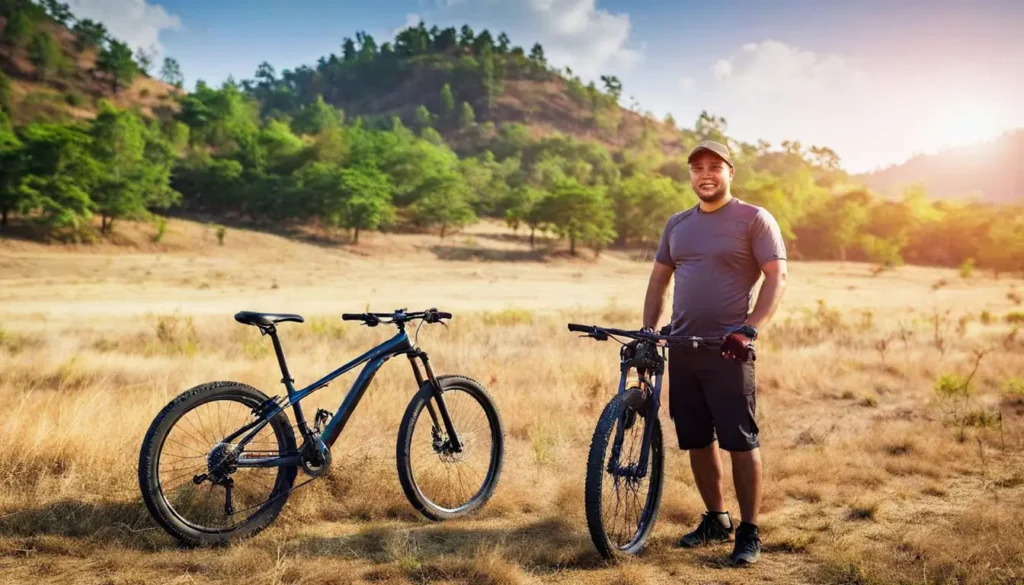
Fat bikes and mountain bikes are two different types of bikes in terms of their tires, suspension, and ability to ride on multiple terrains.
For me, I think the main difference lies in their tires.
A fat bike obviously has larger and wider tires than an MTB which works great on soft surfaces like mud, sand, or snow. On the flip side, MTB has small tires by which you can experience the fastest and lightest ride ever.
Then again, mountain bikes are better at riding on multiple terrains than Fat bikes but as you read, fat bikes are good if you live in a sandy or snowy environment.
Comparison Table of Fat Bike and Mountain Bike
Now that you know about the definition and use of fat bikes and mountain bikes, let’s show you the comparison for your further convenience.
| Characteristics | Fat Bike | Mountain Bike |
| Weight | Heavy | Lightweight |
| Gears | Has less gear (1x drivetrain) | Has more gears (2x and 3x drivetrain) |
| Tire Pressure | Less Tire Pressure | High Tire Pressure |
| Speed | Runs in low speed | Runs in high speed |
| Beginner Friendly | Yes | No |
| All Weather Friendly | No | Yes |
| Traction | Excellent for soft tires | More like bouncy |
| Terrain | Snowy, Muddy, Iced and Deserted | Mountain trails, Singletrack and Unpaved surfaces |
| Comfort Level | Smooth | Harsh |
| Technical Skills | Not that good | Amazing to learn |
| Cost | Expensive | Cheap |
In-Depth Comparison: Fat Bike vs. Mountain Bike
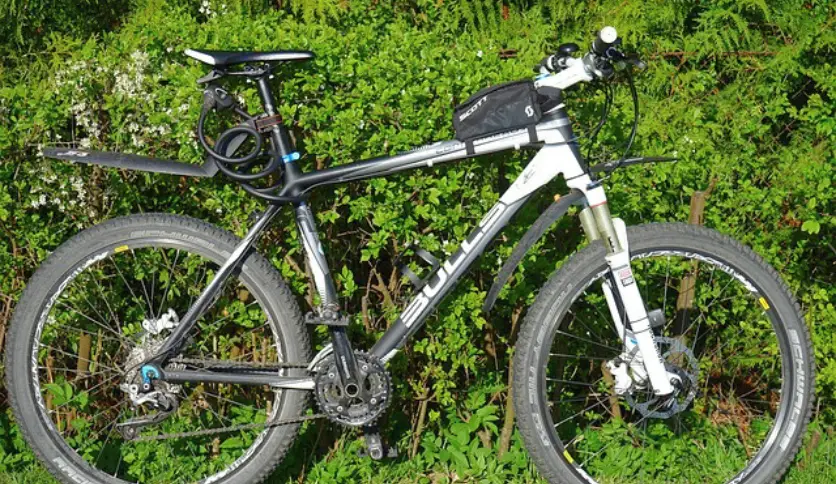
Let’s dig in for some more in-depth comparison of these two bikes to help you make a uniform choice.
Weight
As the tires of fat bikes are extra-wide, definitely they’re equipped with more materials. And that results in more weight. The standard weight of a fat bike is around 33-40 lbs, and if it’s a carbon fiber framed one, it’ll be around 30 lbs – a premium one.
On the other hand, an MTB weighs much less than a fat bike. They’re around 30lbs mostly, and the lightest model weighs about 22lbs. This way, you can feel more speed, efficiency, and comfort on mountain bikes than on fat bikes.
Multitasking Quality
Multitask is great for mountain bikes. As they have more standard tire sizes, you can easily replace their tires and make them hybrid bikes, gravel bikes, or cyclocross bikes. Just get a second set of wheels, and you’re all set.
On the other hand, fat bikes are limited to a few types of terrain. If it’s not muddy, iced, or sandy surface, you can’t really use a fat bike that much. So, I’ll suggest getting this one only if you live in those environments.
But yes, you can also keep an extra set of wheels and mount your fat bike to make an MTB. The mounting will let your bike run at high speed and will make it faster.
Gears
In terms of gears, fat bikes actually have fewer than mountain bikes. Most of the fat bikes have 1 chainring with 1x drivetrain and 10,11,12 speed cassette, which results in 10-12 gears.
But for MTB, you can easily use a 2x or even 3x drivetrain with 20 to 30+ gears only if you prefer. Despite this bike being bouncy, these gears will really help keep you secure and safe. Try it!
Versatility
In terms of versatility, mountain bikes are superior without any doubt. You can use these two-wheelers for almost every type of cycling, including touring, recreational driving, commuting, or off-road riding.
For casual to occasional rides, MTBs are really the go-to ones of my professionals.
However, fat bikes are great for some specific terrains. Without them, you can’t really ride on iced, muddy, deserted, or snowy surfaces. Note that you can change the tires and make your fat bike ready for your regular riding
Tire Pressure
Let’s talk about the tire pressure now. You already know fat bikes have wide tires so, of course, they’ll run at lower air pressure. And for this reason, your ride will be soft, comfy, and smooth.
Those tires will gently absorb all the shocks from the ground and prevent your vehicle from bouncing too much. It reduces fatigue, and you can easily ride it. However, the ride will be a little slower.
Mountain bike tires have high air pressure. It means you can ride it at the highest speed. There’ll be less friction, less energy loss, and more speed.
This pressure will let you reach your destination faster than any fat bike
You can also learn about the perfect width for your MTB to ensure whether it’s suitable for your terrain or not.
Speed
Definitely, mountain bikes can run at a higher speed than fat bikes. The design of MTB is common, and they’re designed for off-riding more. Plus, these bikes weigh less, and the tires are flat, letting the speed go crazy.
Fat bikes are slower than mountain bikes as they’ve wide tires that absorb shocks and create more friction on the ground.
Beginner Friendly
Those who’re interested in learning bike riding, look no further than fat bikes. They’re the ultimate lifesaver. But why would I be suggesting fat bikes for beginners?
Well, the reason is that these bikes are safer than ever for your riding journey to begin. fat bike tires take a long time to run because of their low air pressure. Plus, you’ll have full balance and control over your vehicle
Additionally, if you bump into anything accidentally and fall, the injury won’t be severe as the bike will run slowly.
On the contrary, mountain bikes have flat tires and less weight. Without being a pro rider, you shouldn’t use them. And for beginners, it’s a no-no as you won’t have any balance here. Thus, controlling the speed will be grueling enough.
All-weather friendly
Fat bikes are suitable for deserted, snowy, or cold weather where the surface is sandy, icy, or not even. So they’re not all-weather friendly.
Therefore, MTBs can be a good choice if you want to ride them all year round. they’re good for trail riding too
Traction
Mountain bikes are more bouncy than fat bikes. They have less contact patch with the ground for their narrow tires. As a result, the grip isn’t that superior.
But fat bikes are remarkable here. The traction is outstanding as they’re specially made for slippery or sandy surfaces. And you know, slippery terrains need extra grip, so the traction is best in a fat bike tire.
Comfort level
If you need a two-wheeler that can be comfortable for your ride fat biking is the one. It runs slowly but safely, and the tires eat up all the shocks. Rest assured about the riding.
Regular mountain bike is generally harsh to ride with. You might not feel comfortable here compared to fat bikes.
Technical skills
Learning technical terrain skills through bike riding can be a great deal for you. Balancing, proper use of gear, hoping, braking, and many more are really needed for you to become a pro rider.
And this can be highly possible with mountain bikes. So, if you want to learn the above things, they can be of great help.
Cost
As fat bikes are uncommon, have non-standard tire sizes, and are almost impossible to find the spare parts everywhere, it’s pretty expensive. This extra cost mostly comes from the special hubs, tires, and rims.
A mid-range fat bike can be around $1800-$2200. Not that every fat bike is of this range. You can find some budget-friendly too, and the cost starts from $500.
Therefore, mountain bikes are cheaper in this case. They’re common and have standard tire sizes. The cost starts from $1000-$800, which is pretty budget-friendly, in my view.
So, Who Should Buy A Fat Bike?
Okay, so, who should actually buy a fat bike? The answer depends on some criteria. For example –
If you’re someone who loves to explore off-road, riding in deep sand or deserted places, go for a fat bike. It’s also great for people who live in a cold country. Fat bikes will be a bestie for you on these terrains that no other bike can be!
Next up, if you’re a beginner, fat bikes are your one and only solid option. It’s because they really boost your confidence along with stability. You won’t slip or make any mistakes as long as you keep a little concentration while riding.
Oh yes, these bikes are great for exercise too. You already read above that they consume a lot of energy from you. You can burn more than 1,500 calories per hour in standard conditions and recover quickly too.
Who Should Consider A Mountain Bike?
Well, mountain bikes are kind of for regular use (only if you have a proper balance over them). They’re a perfect choice for people who spend their time both off-road and on-road riding.
Plus, MTBs are great for backpackers and commuters because they handle almost every even or rugged terrain astonishingly well.
Another great thing about MTB is they’re cheaper than fat bikes. So if you’re someone who’s looking for an affordable two-wheeler, here you go with mountain bikes.
They’re great for long distances too. If your office or workplace is not near, feel comfortable riding a mountain bike. It provides high speed with high air pressure.
Are Fat Bikes Good for Mountain Biking?
Absolutely not. Fat bikes usually have fat and large tires, which is only suitable for muddy, snowy, iced, or deserted terrains. These bikes are specially made for off-road riding, where mountain biking can be really dangerous.
Also, a fat bike won’t be as lightweight and faster as an MTB, so it’ll be impossible for you to ride on mountain-cracked roads. The air pressure is low in this vehicle; hence you won’t be able to reach your destination faster.
But, these bikes are amazing for deep sandy roads, which probably won’t be possible with mountain bikes, though!
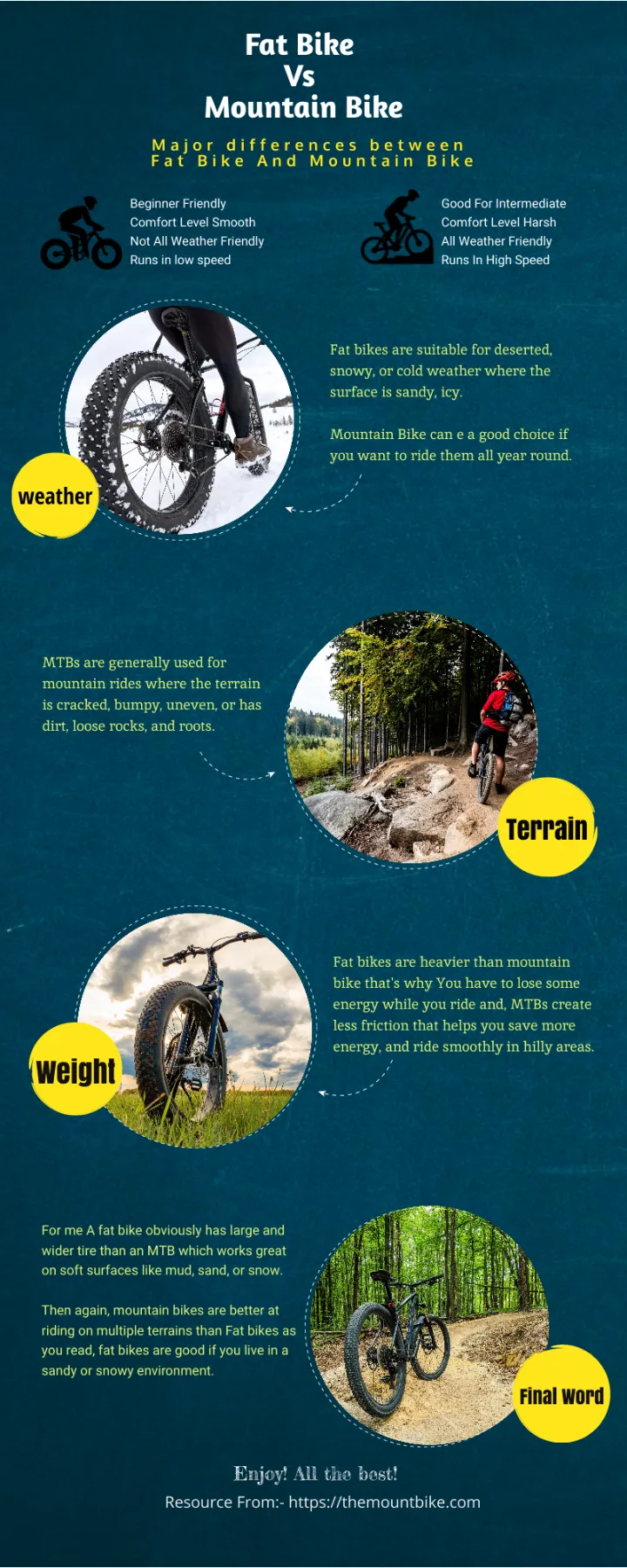
Frequently Asked Questions
Is a fat bike more stable?
Yes, fat bikes are most stable compared to other bikes. As they have large and big tires, it’ll help you to balance properly. The tires also help to resist winds without harming you at all. That’s why it’s called a beginner-friendly bike!
Which bike is good for the street, a fat bike or an MTB?
MTB (mountain bikes) are excellent for the street. The reason is that they have flat tires and less weight which will help you to do any touring, recreational riding, commuting, or even off-riding. If you’re a casual rider, go for MTB for sure.
Are fat tire bikes harder to pedal?
Yes, they are. If you’re thinking of riding your bike on unpaved surfaces, it’s going to be harder than usual. Fat bikes have wide tires and have a thick air layer which results in hard pedaling. But if you live in a desert area, it won’t be that tough.
Final Verdict
That’s all I wanted to share with you regarding fat bike vs. mountain bike. Of course, they’re different, but each of them is best in its own way.
You just need to find out your requirements and environment so that you don’t regret it later on. And yes, always take care of the maintenance of your two-wheeler because that way, your bike will survive longer.
All the best!

I am Ryan Ford, a mountain biking enthusiast who loves to explore the outdoors. I also like to go on adventures with friends and anything else that involves being outside. I love my bike because it gets me out of the house and gives me an opportunity to enjoy nature.
